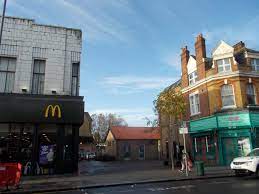Exploring the Safety of Arpley Square: A Comprehensive Analysis
Arpley Square, a vibrant hub nestled in the heart of our bustling city, has long been a focal point for locals and tourists alike. With its diverse array of shops, restaurants, and cultural attractions, it serves as a gathering place for people from all walks of life. However, amidst its bustling energy, concerns about safety have occasionally surfaced. In this article, we delve into the safety of Arpley Square to provide a comprehensive analysis for residents and visitors alike.
Crime Statistics and Trends
To assess the safety of any area, it’s crucial to examine crime statistics and trends. Fortunately, Arpley Square boasts relatively low crime rates compared to other urban areas of similar size. The local law enforcement agencies diligently patrol the area, contributing to a sense of security among residents and visitors.
While isolated incidents may occur, such as petty theft or minor disturbances, serious crimes are rare occurrences within the square itself. This can be attributed to both law enforcement efforts and community initiatives aimed at promoting safety and vigilance.
Community Engagement
One of the key factors contributing to the safety of Arpley Square is the strong sense of community engagement. Local residents, business owners, and community organizations actively collaborate to maintain a safe and welcoming environment. Neighborhood watch programs, business alliances, and community events foster a spirit of cooperation and mutual support.
Moreover, the diverse demographics of Arpley Square contribute to its safety. With people from various backgrounds coexisting harmoniously, there’s a collective commitment to upholding the values of respect, tolerance, and inclusivity.
Infrastructure and Urban Design
The layout and design of a public space play a significant role in its safety. Arpley Square benefits from well-lit streets, pedestrian-friendly pathways, and strategically placed security cameras. These elements not only enhance visibility but also deter criminal activity by creating a sense of surveillance.
Additionally, the presence of amenities such as public seating areas, green spaces, and recreational facilities encourages positive social interactions and discourages illicit behavior. By prioritizing the needs of pedestrians and promoting active street life, Arpley Square fosters a sense of ownership and pride among its inhabitants.
Conclusion
In conclusion, Arpley Square stands as a shining example of a safe and vibrant urban enclave. While no area is entirely free from crime, the collaborative efforts of law enforcement, community stakeholders, and urban planners have created an environment where residents and visitors can feel secure and at ease. By leveraging community engagement, maintaining robust infrastructure, and prioritizing inclusivity, Arpley Square sets a standard for urban safety and livability. As we continue to nurture and support our shared spaces, Arpley Square will undoubtedly remain a beacon of safety and unity for generations to come.

